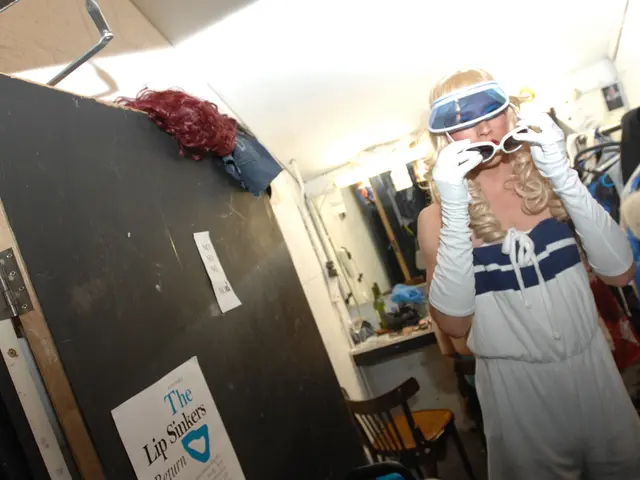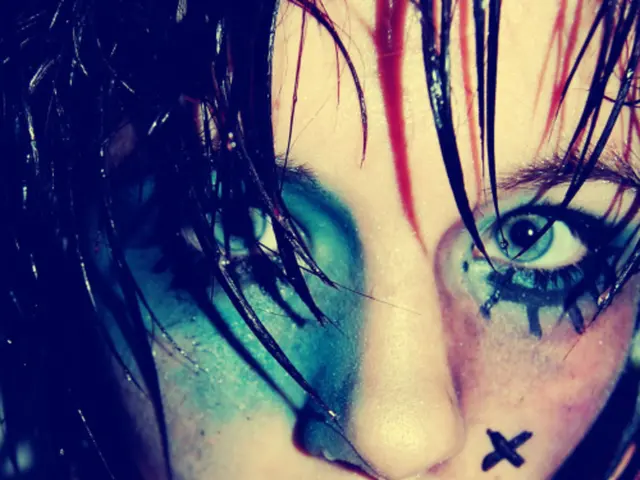Examining the Possible Benefits and Drawbacks of Tanning for Depression Management
Spark a Mood Boost: Is Tanning the Answer for Depression?
Let's dive into the intriguing world where depression meets tanning beds. Is there any merit to the belief that tanning can help alleviate depressive symptoms? Let's explore both the potential benefits and drawbacks that come with this controversial practice.
Tanning and Mood: The Science Unveiled
To fully understand how tanning might affect your mood, we need to decipher the impact of UV light exposure on the body. When our skin is bathed in ultraviolet (UV) radiation, a series of physiological responses takes place that potentially influences our overall well-being.
One mechanism could involve vitamin D production. Our bodies naturally synthesize vitamin D when exposed to sunlight; this essential vitamin plays a pivotal role in mood regulation, among other functions. Some studies suggest a link between vitamin D deficiency and a higher risk of depression, giving rise to the theory that tanning could help battle depressive symptoms by boosting vitamin D levels.
Another theory revolves around serotonin production. Serotonin, famously referred to as the "feel-good" chemical, plays a crucial role in regulating mood, sleep, and appetite. Research demonstrates that exposure to UV light can increase serotonin levels in the brain, resulting in improved mood and lessening of depressive symptoms. Furthermore, tanning sessions may trigger the release of endorphins, the body's natural painkillers and mood enhancers, creating a sense of euphoria and relaxation.
But wait, there's more! Seasonal Affective Disorder (SAD), a type of depression that typically strikes during the fall and winter months when sunlight is scarce, has some people turning to tanning beds as a potential solution. Though tanning beds do emit UV light, they're not similar to light therapy boxes specifically designed to combat SAD. Light therapy boxes emit bright, full-spectrum light that mimics natural sunlight without dangerous UV rays, offering a safer and more effective approach for managing SAD symptoms compared to tanning beds.
The Pros and Cons of Tanning for Depression
While the science is far from definitive, some individuals report experiencing mood improvements and bliss after tanning sessions. This positive change could stem from several factors, such as:
- Enhanced mood thanks to increased vitamin D and serotonin production
- Improved body image and self-esteem from sporting a bronzed glow
- Relaxation and stress reduction during tanning sessions
- Establishing a self-care routine and dedicated "me time"
- Increased social interaction, as tanning can be a social affair
However, it's vital to weigh the potential benefits against the considerable risks associated with tanning bed usage. The most severe concern is the heightened risk of skin cancer, including the deadly melanoma, as UV radiation from tanning beds is classified as a carcinogen by the World Health Organization. Other pitfalls include premature skin aging, addiction (a.k.a. "tanorexia"), and relying on tanning as a primary coping mechanism for depression, potentially leading to less effective, evidence-based treatments being overlooked.
Alternative Light-Based Therapies for Depression
For those craving the mood-boosting benefits of light exposure without the perils of UV radiation, various alternative options are at your disposal:
- Light Therapy Boxes: These devices emit bright, full-spectrum light that resembles natural sunlight without harmful UV rays. They're particularly effective for combating SAD and show promise in managing other forms of depression.
- Dawn simulators: These devices gradually increase light levels in your bedroom, imitating a natural sunrise and potentially improving mood and sleep patterns.
- Natural sunlight exposure: Spending time outside during daylight hours can provide many of the perks of tanning without the associated risks. Activities like walking, gardening, or simply basking in a sunny spot can elevate your mood and vitamin D levels.
- Essential oils: Certain fragrances, such as citrus or lavender, may help alleviate SAD and depression symptoms when combined with light therapy.
By opting for these alternatives, you can tap into the joyful effects of light exposure while steering clear of the risks associated with UV radiation. Better yet, they can complement your overall depression treatment plan, which may comprise therapy, medication, and lifestyle modifications.
Guidance During Your Depression Management Journey
As you mull over potential alternative treatments for depression, keep in mind that close collaboration with healthcare professionals is vital. They can guide you in weighing the pros and cons of various therapies while recommending the most suitable and beneficial options tailored to your specific needs.
In the realm of light-based treatments, discussing Transcranial Magnetic Stimulation (TMS) with your healthcare provider may be insightful. TMS is an FDA-approved depression treatment that employs magnetic fields to stimulate specific brain areas responsible for mood regulation.
In conclusion, untangling the relationship between tanning and depression involves navigating a complex web of benefits, risks, and unresolved questions. The lure of a quick mood boost from tanning may be enticing, but the long-term dangers outweigh the temporary advantages for the majority of individuals. By cooperating with healthcare professionals, you can develop a holistic approach to managing depression that addresses its multifaceted nature while promoting overall mental health and happiness.
- The potential impact of UV light exposure on the body, such as the production of vitamin D and serotonin, could influence our overall mood and well-being.
- Enhanced mood, improved body image, relaxation, stress reduction, and social interaction are some reported benefits from tanning sessions that might contribute to mood improvements in some individuals.
- However, the risks associated with tanning bed usage, like an increased risk of skin cancer and premature skin aging, outweigh the temporary advantages for most people.
- To avoid the risks of UV radiation while enjoying light exposure's mood-boosting benefits, alternative options like light therapy boxes, dawn simulators, or natural sunlight exposure can be considered.
- Collaborating closely with healthcare professionals is essential to understand the pros and cons of various light-based therapies and developing a personalized depression treatment plan that focuses on overall mental health and happiness.








